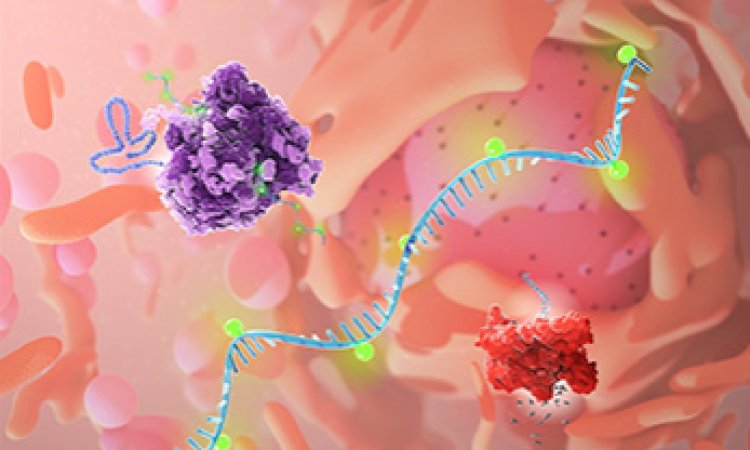Scientists Use Lipid Nanoparticles to Precisely Target Gene-Editing Tools to the Lung
Safe and effective systemic delivery of mRNA to specific organs and cells in vivo remains a major challenge in the development of mRNA-based therapies.
Share this Post to earn Money ( Upto ₹100 per 1000 Views )

Safe and effective systemic delivery of mRNA to specific organs and cells in vivo remains a major challenge in the development of mRNA-based therapies. Currently, the application of mRNA-based technologies is largely limited to liver diseases because of the lack of specific and effective extrahepatic systemic mRNA delivery systems in vivo. Now, a team of researchers has fine-tuned the existing lipid nanoparticle (LNP) technology to be able to deliver mRNA specifically to the lung.
LNP is the delivery vector for two widely used mRNA COVID-19 vaccines currently in use. Tufts University engineers fine-tuned current LNP technology and developed it to target specific tissues and organs for a larger spectrum of diseases, reducing detrimental effects on other healthy regions of the body.
Recently, Dr. Qiaobing Xu's group, in collaboration with Harvard Medical School and the University of Massachusetts, Boston, published a research paper in the Proceedings of the National Academy of Sciences, entitled "Lung-selective mRNA delivery of synthetic lipid nanoparticles for the treatment of pulmonary lymphangioleiomyomatosis".
The current work isn't about gene editing; rather, it's about "bad genes" that are still present and have a transient coding (mRNA) that fades over time, necessitating repeated injections. The researchers questioned if it might be possible to try a more permanent gene editing by delivery.
Min Qiu, a former postdoctoral fellow in Professor Xu's group and now a principal investigator at Fudan University, and co-first author of the research paper, said, "The size and composition of the gene-editing tools may have affected the precision of selective targeting of LNP to the lung. Delivering smaller mRNA nanoparticles would be more selective." The team is currently improving the LNP to enable more targeted gene editing of the lung.
The specificity of LNP targeting to tissues can be adjusted by modifying the shape of the lipid molecules that make up the LNP. Prof. Xu's lab identified a series of lipid molecules having amide bonds in the tails of the lipid molecules, which make up the LNP with the potential to preferentially deliver mRNA to the lungs of mice, by screening a library of lipid molecules.
Further research demonstrated that when lung-targeting LNPs reach the circulation, particular plasma proteins bind to their surface, allowing them to target lung tissue. The researchers used liquid chromatography-mass spectrometry to identify 14 proteins, including ApoE, albumin, fibrinogen beta, and fibrinogen gamma, which may aid in the selective absorption of LNPs in the lungs.
The researchers employed LNP to transfer mRNA encoding the normal Tsc2 gene to mice that develop lymphangioleiomyomatosis (LAM) due to inactivating mutations in the Tsc2 gene to further validate their findings. On X-ray or CT scans, mutant Tsc2 causes smooth muscle tissue to develop out of control, forming cysts that resemble large voids or holes in the lungs. Direct delivery of the normal Tsc2 gene to the lung dramatically lowers cysts in the LAM mouse model. In mice, this LNP was extremely effective at delivering Tsc2 mRNA to lung cells, restoring Tsc2 activity, and significantly reducing tumor burden.
"LNP carrying mRNA is highly promising as an intervention to treat this serious disease," Professor Xu said, "we hope to take it further into clinical trials."

 catalinagarcia
catalinagarcia 





